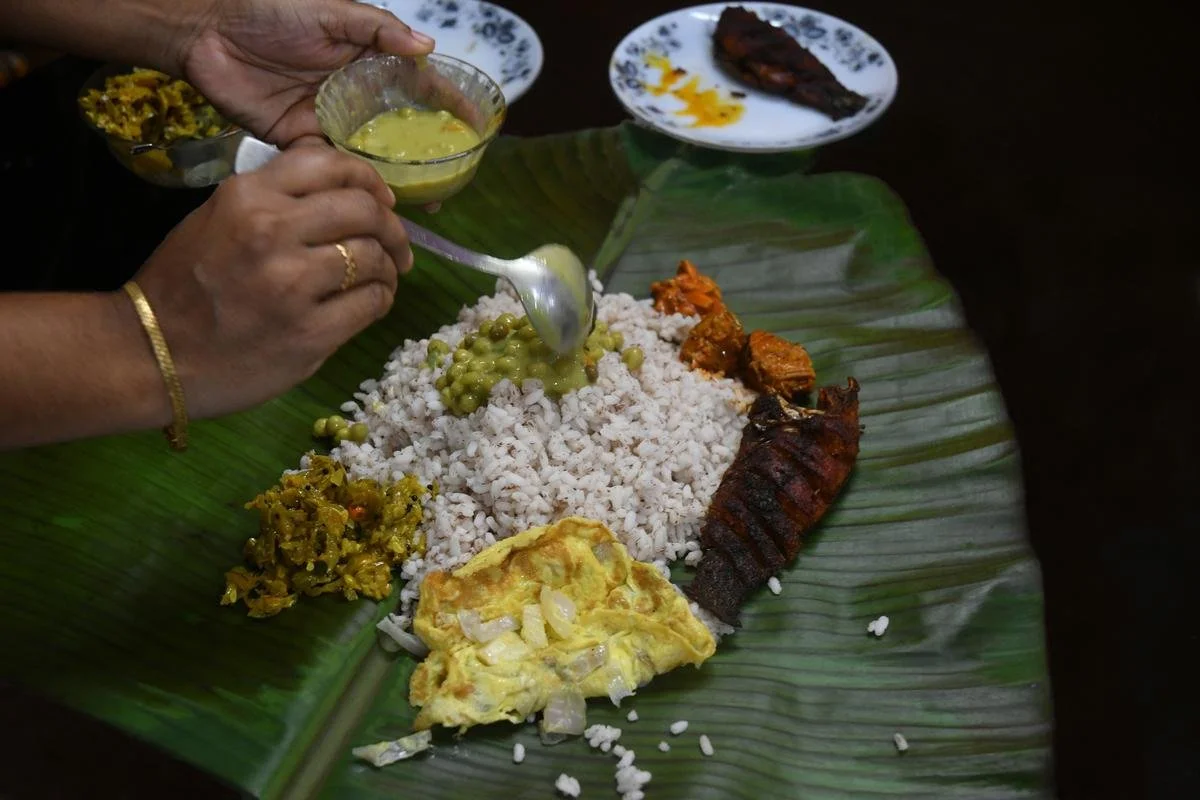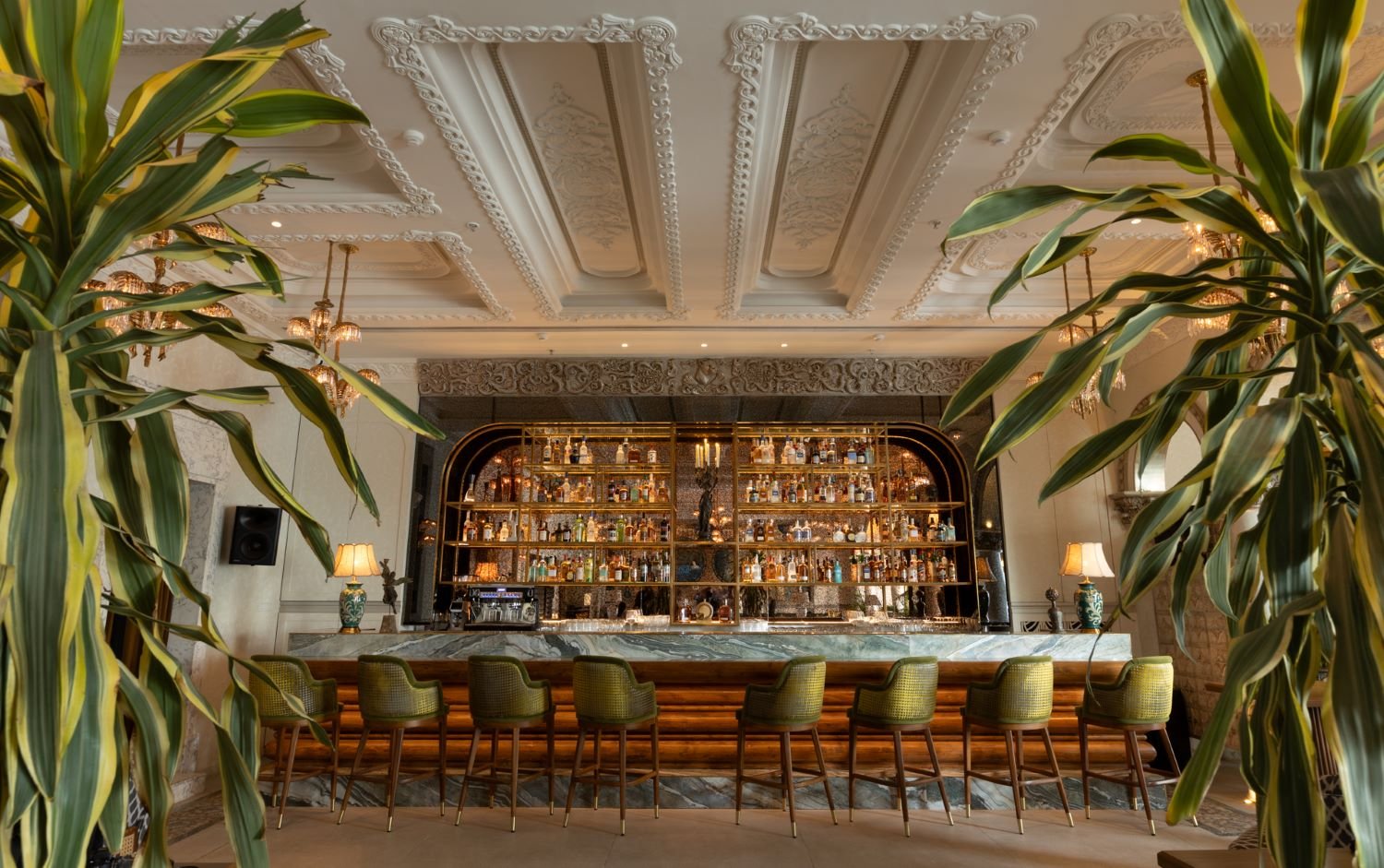The Karachi Roots of Bombay Halwa

Bombay and Karachi are twin port cities, once part of the Bombay Presidency under the British rule. Junisha Dama traces the history of the Sindhi halwa, a mithai that connects two cities torn by the Partition.
At my sister’s wedding, halwa was a parting gift to all our guests. Until recently, halwais stirring a large degh of mithai was an image commonly associated with Indian weddings. At Sindhi weddings, halwais are focussed on making the community’s most beloved mithai, the Sindhi halwa. The tradition of gifting this halwa is dwindling though, and halwais are disappearing from weddings; we had to make several calls to find one who would make it for us the Nasarpuri way.
Nasarpuri Sindhis, whose ancestral village is Nasarpur in Sindh — serve achho halwo (white halwa) at weddings. White halwa has no natural or artificial food colouring, and contains elaichi, arrowroot powder, sugar, and pista. Beyond the absence of colour, it is made the same way, but it is eaten with sev. That sweet-savoury combination was typically eaten at breakfast on the wedding day, and also makes for a great parting gift at the end of wedding festivities.
The role of the Sindhi Halwa — also known as Karachi or Bombay halwa — during weddings is crucial. In the age of bullock carts, when guests travelled long distances, halwa was packed for the long journey home. It was a filling snack with a long shelf life of up to 30 days.
The Sindhi halwa is popularly known as Bombay, or Karachi halwa.
Packed with dried fruits, this halwa is also offered as prasad to goddesses. “We do not offer a garam prasad [cooked on the same day] to any Mata. As mawa prasad may go stale, this halwa is offered instead, especially during a Mata Ka Jagran,” says Alka Keswani, a food blogger at Sindhi Rasoi.
“My Hindu friend tells me it is eaten ‘jab baat pakki karni ho’ (at engagements). Her family gets it from Umarkot or Mīrpur Khās, where it is more widely made,” says Osamah Nasir, a Pakistan-based content creator. He tells us that that the sweet is more commonly found in rural Sindh.
Tracing the complex origin of this halwa is fascinating. It was made in some part of Sindh centuries ago, as the Persian Empire’s extended its influence in the cuisine of the region. “[It is] something which used to be originally made in Turkey. So, [Sindh] being the same belt, having the same topography, and same climate, we have also been making it,” says Saajan Mandyani, owner of Tharu Sweets Mukhi Bhandar, a Sindhi sweet shop which moved from Shikarpur, Sindh to Mumbai after the Partition. It should be no surprise then that the Sindhi halwa bears uncanny resemblance to the Turkish lokum (Turkish Delight); to the tahini-based Israeli halwa that Israeli and American Jews eat; and the chik-cha halwa made by the Bene Israeli Jews in India. It is believed that this halwa was brought over to India by Karachi-residing Sindhis; a dessert that connects two cities torn by the Partition.
The Sindhis call it chaboo halwo. Chaboo has roots in the word ‘chabaaran’ meaning to chew in Sindhi. The gelatinous halwa is stretchy and requires a lot of jaw work, making chewing it a task. “My Sindhi friend tells me it’s also called rubber halwa,” laughs Nasir.
Another name, nishashta jo halwo, describes how it is made. Nishashta is the starch of wheat (and sometimes corn). Wheat is rinsed and soaked in water that must be changed every day. Once the wheat has swelled and softened, it is coarsely ground to a pulp, sieved using a muslin cloth, and water added in. The milky liquid is then kept undisturbed in a clay pot for 24 hours. After this, the water is drained and the starch collected at the bottom of the pot is laid out and dried till it becomes a chalk-like powder. This powder is nishashta, which is stirred in with sugar, ghee, and water to make the halwa. Although, several halwais now substitute the nishashta with cornflour as it is cheaper.
“The green colour is from a paste of pistachios, and the orange is from saffron. Whole spices like mace, nutmeg, and cardamom are also added. So, it gives warmth as well,” says chef Bharat Khemani, partner at Karachi Halwa House, Delhi. Tharu Sweets tells us they continue to make it with nishashta and do not add any spices to their halwa to stay close to the traditional recipe.
“The Turkish delight and the baklava require a lot of fat, a lot of ghee. People used that to give themselves warmth through the harsh cold climate,” says Khemani. Dried fruits were also added for nourishment. The use of pure ghee and dried fruits also gave it the name kushti halwa, as Mandyani tells me, “They [pehelwaans] used to eat it for nutrition before a match of kushti.”
The halwa is popularly known as Karachi halwa and Bombay halwa. Everyone assumes it was created in Karachi, but it is the Sindhis who probably named it to represent Sindh. The port city of Karachi was once extremely prosperous, and a major centre for commerce and industry; the pride of Sindhis. Author Rajyasree Sen in her book, The Sweet Kitchen: Tales and Recipes of India’s Favourite Desserts, writes, “Following the partition, the nomenclature referring to the origins of the dessert became a bone of contention.” The Karachi Halwa’s name changed to Bombay Halwa as mostly Karachi-residing Sindhis had moved to Maharashtra’s capital, and because Bombay and Karachi were twin port cities and once part of the Bombay Presidency under the British rule.
Delhi, though, continues to call it Karachi Halwa, as does Karachi. Ahmer Naqvi, a Pakistan-based writer who conducts food tours in Karachi explains, “It’s perhaps an adopted name by the diaspora because of the popularity of the name in India,” he says.
Osamah confirms, “It’s known as pista Karachi halwa and Karachi halwa and the green-coloured variety is more common.” But as pistachios are costly, sweet shops across India and Pakistan now use food colouring instead of a pistachio paste. The halwa, however, has garnered enough popularity in India and has been adapted by non-Sindhi mithai shops too.
With Sindhis scattered across the globe, the cuisine struggles to survive. But the Bombay-Karachi halwa is holding on some traditions of Sindh.
Junisha Dama is a freelance writer, and conducts food tours in Mumbai.
ALSO ON GOYA









